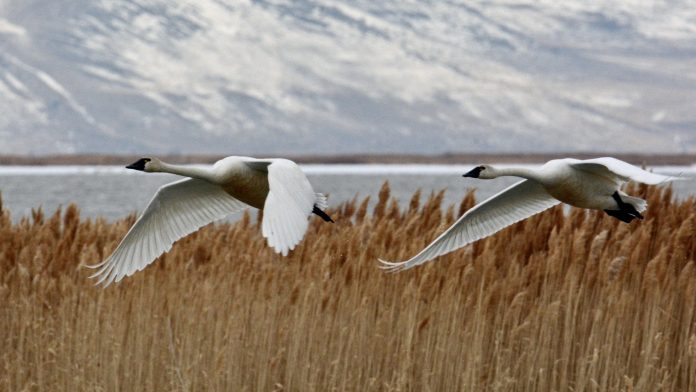BRIGHAM CITY, Utah, May 11, 2023 (Gephardt Daily) — The latest head-counts of the annual return of the flocks to the Bear River Migratory Bird Refuge are beginning to, well, soar.
The numbers had been climbing to the 30,000 range early last month, according to the refuge’s Facebook page.
The biggest jump so far this spring in the counts conducted by refuge staff and volunteers came March 15, when 39,101 birds were sighted from 59 species at the 80,000-acre preserve just west of Brigham City. The March 2 count was only 4,672 with 35 species.
By March 29 things had leveled off some with a census of 33,656 and 65 species, then April 13 saw 30,663 from 73 species.
The latest count of April 25 is 53,912 featuring 74 species, according to the refuge.
“Right now is a spectacular time to be out on the wetlands.”
The refuge has yet to announce any flooding problems with winter’s record snowpack now in runoff mode, unlike the floods which engulfed it in 1983, closing the refuge to bird and man alike until 1989.
Eagles both bald and golden are showing up, plus hawks, harriers, owls, herons, swans, cranes, stilts, grebes, ducks and gulls. Pelicans visiting from their nearby closed-to-the-public sanctuary on Gunnison Island in the Great Salt Lake; starlings in their trademark swarming effect.
The names can almost be as startling as the sight of a near 5-foot-tall great blue heron, grackles, gadwalls, buffleheads, the lesser scaup and the occasional double-crested cormorant.
The refuge lies along the eastern edge of the Pacific Flyway and the western edge of the Central Flyway, between Canada to Mexico, making it an important resting, feeding, and nesting area for birds in both flyways, according to the U.S. Fish and Wildlife Service.
Of more than 250 bird species that use the refuge, 67 species nest there, according to the USFWS. “American avocets and black-necked stilts nest by the thousands along refuge dikes and roads.
“White-faced ibis nest in dense emergent vegetation in large colonies of up to 10,000 birds. Migrant tundra swans can number in the tens of thousands in the spring and fall.”






